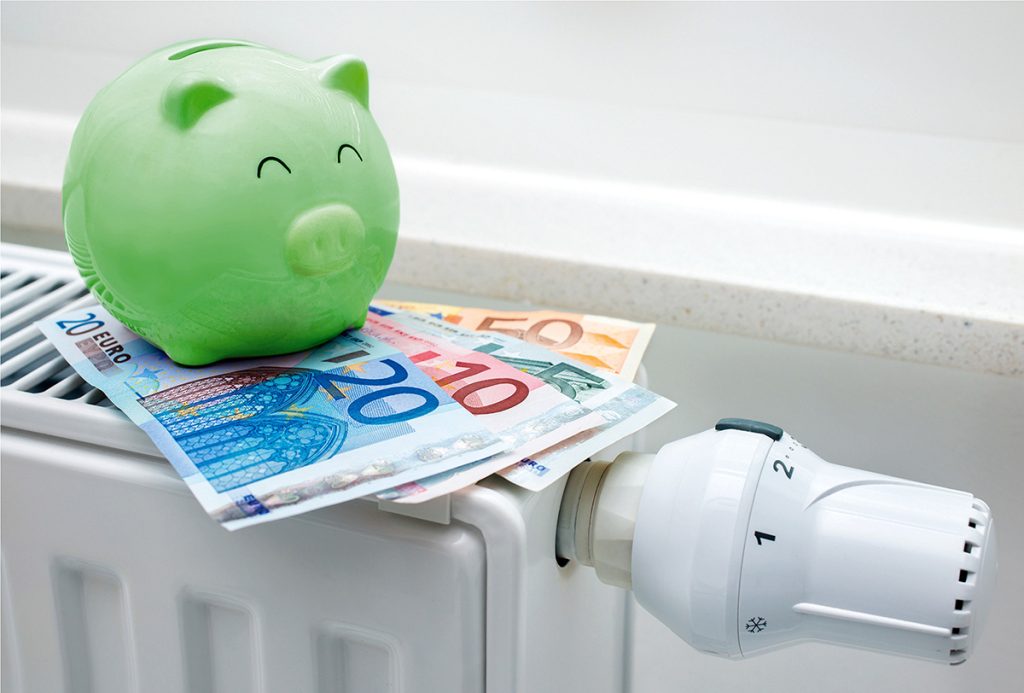Even a single kilowatt hour has a large impact, save it!
We in Finland live in an age when energy and the wellbeing brought about by it are in abundance for everyone. Here in the cold North, energy has been a prerequisite for success, and without it our society would grind to a standstill. For our generation, energy has been a matter of course – the Finnish home has been warm and bright for decades.
Finland uses about 377 TWh of energy per year. Housing accounts for about 40% of the total, of which heating takes up about 75%. Energy used in Finland is divided into coal, oil, nuclear power, peat, and renewable energy. Imported energy makes up about a third of that, which means that energy also has a direct impact on our balance of trade. We are dependent on imported energy.
Energy also affects the Earth’s climate. Finland’s national climate goal requires cutting greenhouse gas emissions by 39 per cent by 2030 from the 2009 level, and national carbon neutrality by 2035. Energy plays a big role in this challenge, as well, even if more and more Finnish energy is produced from renewable sources. Every kilowatt hour produced puts more or less of a load on the atmosphere, if not directly, then at least indirectly – there is no such thing as harmless energy in this sense. Technology is needed in one form or another to collect/produce energy, and it always has its own environmental burden, which is often ignored in discussions. Additionally, we are headed towards an age when the global need for energy will grow day by day, alongside population growth. As energy demand increases, emissions also threaten to increase.
Housing is a basic human need. A significant part of Finland’s emissions come from heat losses, as structures of houses lose heat in winter. Heat rises upwards, so the majority of the heat loss of the building shell of a small house occurs through the flat roof. Still, few people know that supplementary thermal insulation for the loft attic is fast, inexpensive, and perhaps the most environmentally friendly way to cut greenhouse gas emissions and improve the energy efficiency of a small house.
The use of Termex Cellulose insulation as additional insulation for an attic is climate-friendly, but energy saving is only one part of why it’s good for the environment. Termex is made from a renewable raw material, recycled newspaper, by defibrating. The little energy consumed in the production is certified, domestic wind energy. The emissions produced by the production process are about 105 g/kg CO2eq. Termex Cellulose insulation binds 1360 g/kg CO2eq carbon during its life cycle. This makes it one of the most ecological insulation materials on the market.
So, what are the concrete benefits of installing additional attic insulation? Let’s say we have a small house with electric heating in Jyväskylä, built in 1980 and with a heated area of 150 m2. Usually about 20 cm of glass wool was used as plate insulation in a house of this age, for the thermal insulation of the flat roof. The so-called U-value describing thermal insulation is 0.28 W/m2K. In addition to this, installation deficiencies due to the sheet-like nature of the insulation cause lattice and joint leakages. The heat losses caused by the leakages are, however, excluded from this calculation analysis.
We install 30 cm of Termex Cellulose insulation into attic of our example house by blowing it in as additional insulation lawyer. After the additional attic insulation, the new U-value is 0.09 W/m2K, which corresponds to the minimum requirement in the current building regulations for thermal insulation of the attics of small houses. Blown-in loose fill insulation fills the space to be insulated with no seams, so the old insulation layer works better, too, because the seam leaks are eliminated. By calculation, the annual energy consumption of our example house is reduced by 3050 kWh. The financial savings come to 400–500 euros per year. During a 10-year review period, emissions decrease by 6100 kg CO2eq, which corresponds to approximately 33 000 km of driving. The price of additional attic insulation is 2500-3000 euros, depending on possible additional work. The return on invested capital is 16–13%. In addition, living comfort improves, with temperature changes disappearing.
A FAIR DEAL – from the point of view of both the earth and the residents.

Pasi Typpö
The writer is the development and marketing director of Termex-Eriste Oy

